May 28, 2025 | 09:52 GMT +7
May 28, 2025 | 09:52 GMT +7
Hotline: 0913.378.918
May 28, 2025 | 09:52 GMT +7
Hotline: 0913.378.918
Quang Nam Province currently has the second-largest forest area nationwide. The province also ranks sixth in terms of natural forest area, with a total of 681,156 hectares of forest land spanning 201 communes in 18 districts, towns, and cities. Notably, it houses over 218,800 hectares of planted forests and 16,490 hectares of production forest land.
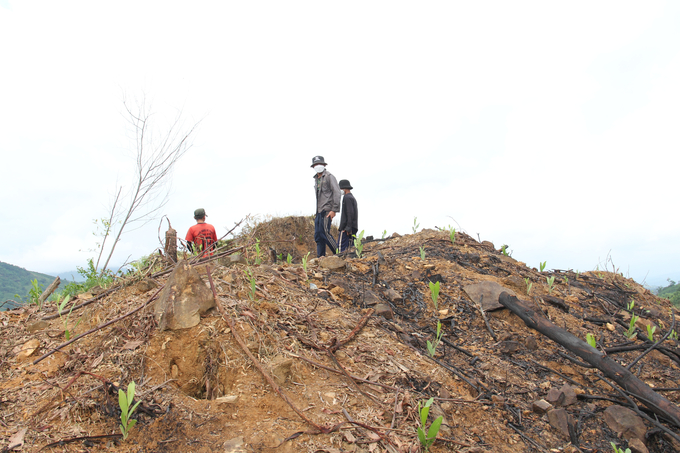
The residents of Quang Nam Province prefer to focus on planting production forests that support the wood chip processing industry. These forests typically have a cycle of four to five years. Photo: L.K.
Quang Nam Province plants an average of 17,630 hectares of forest. This area consists primarily of post-harvest replanted forests (17,416 hectares). Notably, 216 hectares are newly planted forest on land that previously housed no forest. The province's annual timber yield from planted forests reaches an average of nearly 1.65 million cubic meters. Consequently, these forests helped create employment opportunities, increase incomes, and support sustainable poverty reduction for local households.
With this potential, Quang Nam aims to strengthen its forestry sector by reinforcing a shift from traditional planting practices to sustainable forest management and harvesting in compliance with international standards. A notable solution is the development of large timber forests certified by the Forest Stewardship Council (FSC). The goal is to create a supply of raw materials with verified and safe origins, as well as contribute to effective forest protection.
Tu Van Khanh, Deputy Director of the Quang Nam Province's Sub-Department of Forest Protection, reported that the province hosts over 25,000 hectares of FSC-certified planted forests (with 19,310 hectares currently active). Accordingly, Quang Nam has implemented the certification process in nine districts: Tien Phuoc, Hiep Duc, Nui Thanh, Phu Ninh, Dai Loc, Bac Tra My, Nong Son, Phuoc Son, and Nam Giang.
"With the existing planted forest area and the 16,490 hectares of land designated for production forest development, Quang Nam has significant potential for developing large timber and FSC-certified forests. However, the area of large timber and FSC-certified forests is relatively limited at present," Deputy Director Khanh noted.
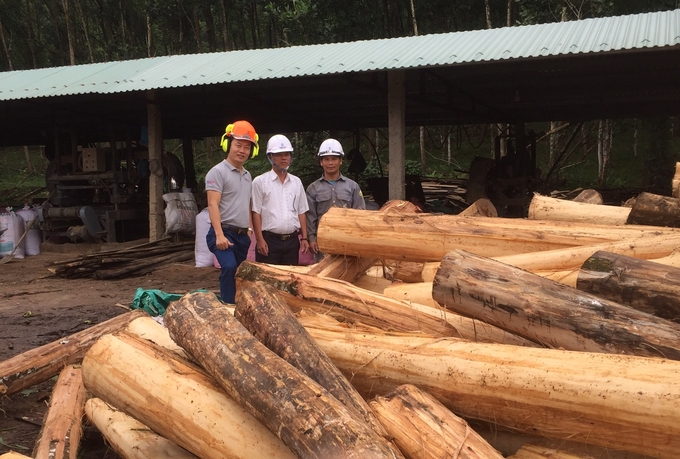
Quang Nam Province currently hosts over 25,000 hectares of FSC-certified planted forests. Photo: L.K.
The development of large timber forests in Quang Nam currently faces several challenges. Namely, its residents prefer to focus on planting production forests for the wood chip processing industry, which have a harvesting cycle of four to five years. They failed to see the benefits of forest certification and raised concerns regarding market demand for certified timber. Additionally, the province lacks supply chain linkages between stakeholders in the forestry sector. Businesses have also failed to provide effective support in terms of funding or technical assistance to local farmers.
Regarding the challenges of large timber forest development, Nguyen Dang Chuong, Vice Chairman of the Nam Giang District People’s Committee, noted that Quang Nam currently provides a support package with a value of 10 million VND per hectare for border communes and 8 million VND per hectare for non-border communes.
“The majority of vegetation in Nam Giang consists of grasses, reeds, and category-3 shrubs, such as sim, mua, and forest orchids. With the current level of support, local residents are unable to invest and participate in large timber forest development. The low funding leads to fewer annual tending cycles, which fails to ensure the quality of planted forests and reduces the project’s overall effectiveness,” Vice Chairman Chuong remarked.
Furthermore, local facilitators for large timber forest projects receive limited support from the government. Accordingly, they receive 500,000 VND per hectare over four years for extension services, annual management costs equivalent to 10% of the total investment, and a one-time allocation of 300,000 VND per hectare for surveying, design, and afforestation contract signing. These low funding levels severely impact the effectiveness of guidance, inspection, and monitoring efforts.
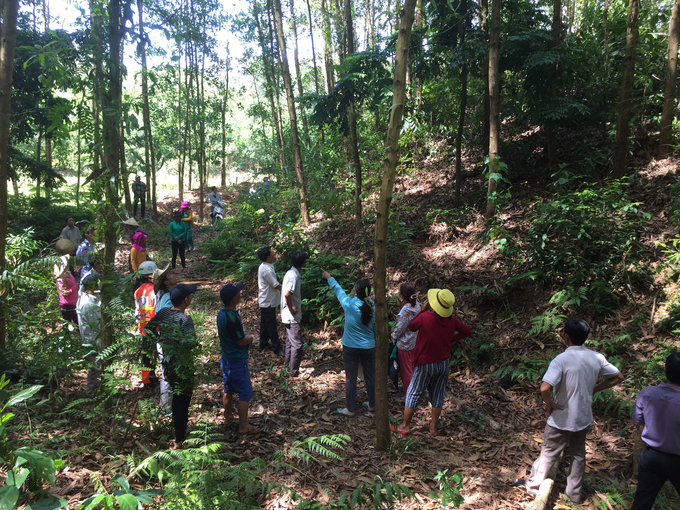
Quang Nam Province is focusing on raising awareness among residents regarding the value of large timber forests. Photo: L.K.
According to the Quang Nam Province's Department of Agriculture and Rural Development, planting large timber forests for commercial purposes requires an extensive investment period. Other factors, including economic pressures, risks from natural disasters, and market fluctuations, prevent a significant portion of households in mountainous areas from investing in large timber forests or converting small timber forests into large ones. Additionally, local governments are unable to identify alternative tree species to shorten the production cycle for large timber forests.
Tran Ut, Deputy Director of the Quang Nam Province's Department of Agriculture and Rural Development, commented that the Provincial Party Committee issued Resolution No. 15 in 2021 with the aim of improving forest management, protection, and development efforts. This resolution is effective for the years between 2021 and 2025, with a possibility of extending into 2030. Ultimately, the province aims to have 30,000 hectares of production forests certified for sustainable management under international forest governance standards (FSC) by 2030.
Regarding solutions, Deputy Director Ut emphasized that Quang Nam is prioritizing public education to improve awareness, particularly in areas with significant potential for forestation. Concurrently, the province is implementing solutions for land management, improving the capacity for sustainable forest management, promoting FSC certification, and organizing production processes in association with market consumption. Improving seed management and increasing access to capital are also key priorities.
“In addition, Quang Nam will support and encourage businesses to establish partnerships with households looking to invest in large timber forests. Under this approach, businesses will provide funding and scientific and technical expertise, while households contribute land-use rights as capital. After harvesting, stakeholders will share profits based on capital contributions, thereby forming a value chain for forestry products and enhancing market competitiveness,” Deputy Director Ut explained.
Translated by Nguyen Hai Long

(VAN) The WOAH guidelines provide a vital tool for risk chain analysis, covering the extraction, transportation, consumption, and handling of confiscated wildlife.

(VAN) World Environment Day 2025 is launched by the United Nations Environment Programme (UNEP) with the theme 'Beat Plastic Pollution'.
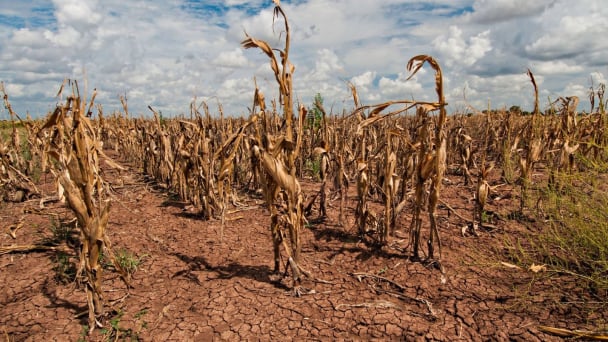
(VAN) As climate whiplash reshapes yields, experts say data-driven tools and targeted relief are critical to feed America.
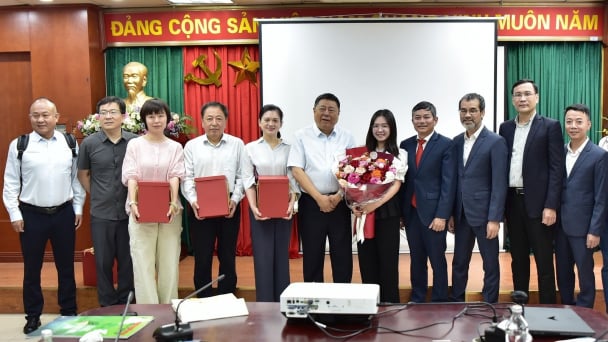
(VAN) The alignment in goals and operational direction between the Vietnam Agriculture and Nature Newspaper and Shaanxi Daily opens up promising prospects for journalism and media cooperation.
/2025/05/26/3422-3-102748_432.jpg)
(VAN) Prime Minister Pham Minh Chinh has been honored as the Distinguished ASEAN Leader at the ASEAN Leadership and Partnership Forum (ALPF) 2025 held in Malaysia, affirming Vietnam’s role and reputation.
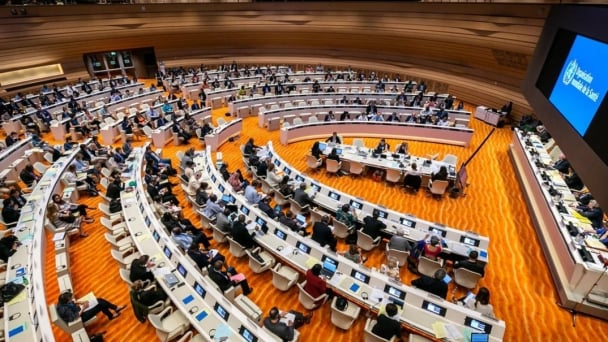
(VAN) At WHA78, with health placed at the heart of the global climate storm, Viet Nam enters a new commitment to protect communities from increasingly severe risks.

(VAN) Despite investment costs being 1.5 to 1.8 times higher than conventional methods, multi-story pig farming demonstrates outstanding effectiveness, increasing land-use efficiency by 4 to 10 times.